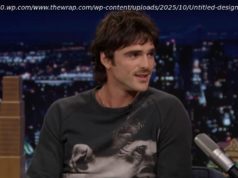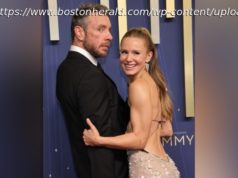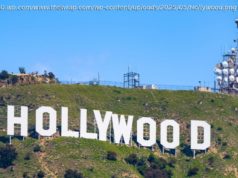The ensemble cast in this dark comedy is fantastic throughout
Sometimes, the monsters are real. And as Stephen Karam’s Tony-winning drama “The Humans” makes unnervingly clear, the monsters of fiction and imagination pale in comparison to what lurks in the real world.
Set in real time over the course of a 90-minute Thanksgiving dinner, “The Humans” starts out creepy, briefly lulls you into thinking it’s just another dysfunctional-family comedy and gradually becomes chilling enough to bring out goosebumps.
It’s a horror story without blood or guts or clichés. There are no creatures from the Black Lagoon or fiery-eyed demons out to drag you to hell. What Karam explores is far scarier. We never leave the Chinatown apartment of Brigid Blake (Daisy Eagan) and her live-in partner Richard (Luis Vega) as they host her family for turkey and fixings. But something both otherworldly and all-too-tangible stalks both the rooms and the family.
That sounds unoriginal because everybody knows life is scary, right? But in director Joe Mantello’s production, the ever-intensifying fear and unease transcends cheap tropes. Yes, there are flickering lights, things that go bump in the night, shadowy corners and the occasional jump scare (when a seemingly peaceful scene turns scary unexpectedly). There is also a subtly to all of the above that makes the drama powerfully disquieting. Eeriness compounds eeriness until a final moment that may well have you sleeping with the lights on and your bedroom door barricaded.
The plot essentially makes the audience a fly on the wall for the Blake family Thanksgiving. Brigid and Richard are both broke – he’s a grad student and she’s a musician who can’t get a job as such – but they seem happy. The family is close. It includes Brigid’s sister Aimee (Therese Plaehn), a lawyer who has just parted ways with her girlfriend, their parents Erik (Richard Thomas) and Dierdre (Pamela Reed), and grandmother “Momo” (Lauren Klein). The warmth connecting this tightly-knit group is palpable.
It’s Momo – who is suffering from dementia – who unleashes the first indication that something is off. As parents and children hug and catch up, Momo starts repeating something that initially sounds like gibberish and quickly takes on the feel of some sort of ancient invocation.
Daisy Eagan (left) and Therese Plaehn in “The Humans.”| Julieta Cervantes
From there, Karam brings on the darkness. Mortality keeps creeping into the dialogue like an insistent, boney figure tapping on your shoulder. There’s an aside about the Triangle Shirtwaist Factory fire. The apartment is in a flood zone. The Twin Towers that used to stand just blocks away. And Momo isn’t the only Blake whose very body is being destroyed from within. Erik, Dierdre and Aimee are all battling physical ravages rooted on a cellular level.
Financial pressures are equally intense. There’s a sense of drowning when Erik tells his daughters about the crisis he and Dierdre face. It’s not only that Momo’s health care costs are astronomical; Erik and Dierdre are staring down an abyss that seems barely a paycheck away from bottoming out in homelessness.
As the family’s problems come to the surface, the very apartment starts to feel like it’s out to get them. Weird things keep happening: Erik sees an old woman in a courtyard that no one has access to. Crashing noises from the upstairs apartment go from annoying to inexplicably huge. Diedre sees a cockroach – or something. Momo recalls an ancient prayer. An old woman, face obscured, shuffles silently past a door left ajar. References to sayings and songs from Ireland’s Druid days lace the dialogue.
The ensemble cast is fantastic throughout. Thomas makes a complicated leading man, both the engineer of his own downfall and a victim of harsh circumstances. Klein is fantastic as a mother determined to present a calm front even as the waters come rushing in.
Scenic designer David Zinn’s divides the duplex into two levels with a layer of corroding shadows that look like them might harbor just about anything. And sound designer Fitz Patton and lighting designer Justin Townsend make the supernatural (or are they?) sparks fly.






